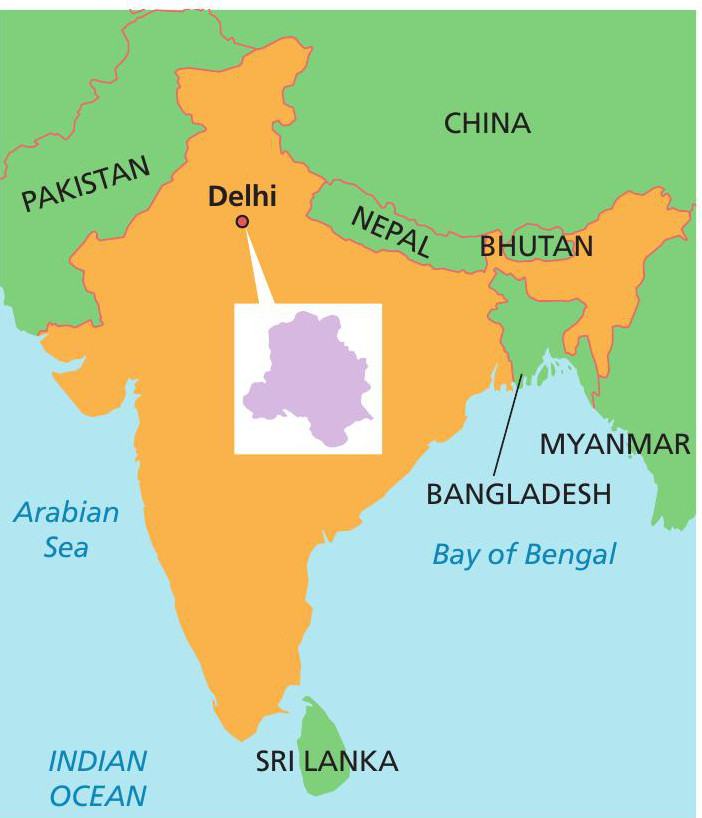
According to the United Nations, 54% of the world’s population now live in urban areas. India lags behind this global trend — it is estimated that only 30% of its population is urban. Despite this, India has six megacities with populations of more than 10 million people: Delhi, Mumbai, Kolkata, Bengaluru (formerly known as Bangalore), Chennai and Hyderabad. Delhi is the largest city in India, with an estimated population of over 26.5 million.
All megacities have their share of social, economic and environmental problems and numerous non-governmental organisations (NGOs) have been formed to address these. This article focuses on one such NGO, working in Delhi: the Asha Community Health and Development Society. Asha means ‘hope’ in Hindi. The organisation was started in 1988 by Dr Kiran Martin, an Indian paediatrician, in response to an outbreak of cholera in one of Delhi’s slum communities. The work of this NGO is an example of bottom-up development. Asha’s programmes are a local response to problems within Delhi’s slum communities and the skills of local people are harnessed to bring about improvement.
Your organisation does not have access to this article.
Sign up today to give your students the edge they need to achieve their best grades with subject expertise
Subscribe




